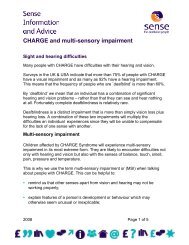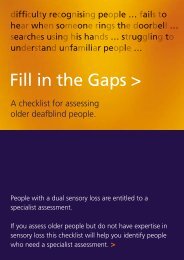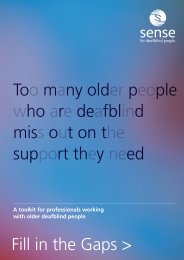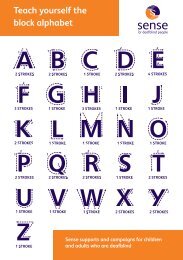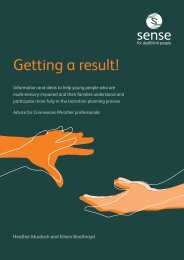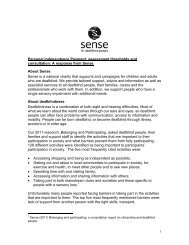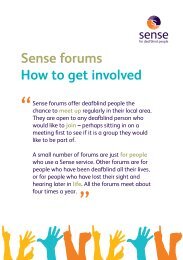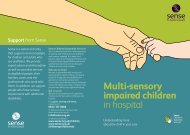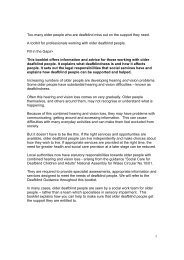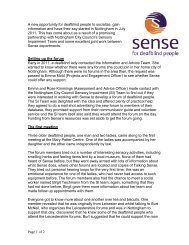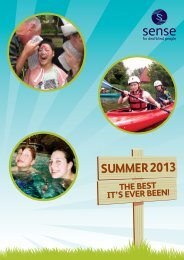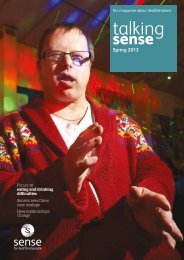MSI Unit Curriculum - Sense
MSI Unit Curriculum - Sense
MSI Unit Curriculum - Sense
Create successful ePaper yourself
Turn your PDF publications into a flip-book with our unique Google optimized e-Paper software.
<strong>MSI</strong> <strong>Unit</strong> <strong>Curriculum</strong>: Phase 3Pupils are encouraged to interact, for example by needing to share props indrama. Staff may manipulate activities to promote interaction – for example, bylooking at class photos with one pupil in another pupil’s presence.Joint teaching activities, with one member of staff working with (usually) twopupils, are structured to encourage pupils to be aware of, and where possiblelearn from, each other’s actions.Specific interaction skills (for example, asking a peer for an object) are modelledand practised in a number of different sessions.CommunicationPupils understand and use some symbolic communication (speech, signs,symbols, pictures or objects of reference, accessed directly or through ICT).They use single words, signs or symbols to represent ideas. Much of theirexpressive communication remains non-verbal and they are still reliant oncontextual cues in many situations.Staff gradually reduce the support given to pupils – for example, by notalways initiating routine activities – so that pupils are motivated to initiatecommunication and use different communicative functions such as gainingattention and showing items to staff. This approach is sensitively managed sothat pupils’ confidence and motivation is maintained.Staff communicate with each other using modes that are accessible to pupils(for example, signing to each other if pupils use sign). The messages that theyconvey in this way are limited to those within pupils’ understanding.Staff model different communicative functions in their conversations with pupils– for example, possession (‘That’s my coat!’); denial (‘Have you had a drink? No,you haven’t.’)Pupils are encouraged to help repair breakdowns in communication, for exampleby repeating their previous utterance. Initially staff may need to pretend thatthey have not heard or understood when in fact they have, so that they haveenough information to support pupils effectively in repairing the ‘breakdown’.Staff increasingly expect pupils to use symbolic communication, for example inmaking choices.Staff use more complex language structures in their communication with pupils.The information provided in activities like calendar work becomes more detailed– for example, showing where and with whom an activity will take place.65




